List of Authors
>>About this blog
Recent blog post
|
[Sam]
March 28, 2014 15:00
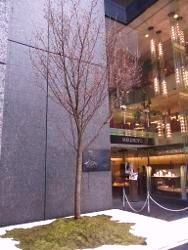 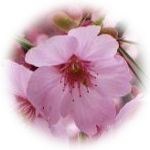 On March 25, the blossoming declaration of Yoshino cherry tree in central Tokyo was issued. 9 days later than last year and 1 day earlier than normal. On March 25, the blossoming declaration of Yoshino cherry tree in central Tokyo was issued. 9 days later than last year and 1 day earlier than normal.
It is expected that the cherry blossoms in the city center will be in full bloom at the beginning of next week, and it will finally be spring.
At the Garden Plaza in front of the Ginza Mikimoto Main Store, on March 27, the exhibition of Ginza's tradition "Sakura" began again this year.
An annual project that has been implemented since 1996 with the desire to "enjoy the four seasons and nature of Japan in the city of Ginza".
This year's cherry blossoms are a large single bloom, characterized by vivid pink (scarlet), and are said to be a hybrid of "Amagi Yoshino" and "Kanhizakura".
"Yokozakura", which has been carried with roots, has a height of 3.5m and an estimated age of about 35 years.
Regarding the birth of this cherry tree
"A former teacher in Ehime Prefecture, Masaaki Takano decided to give cherry blossoms to various places in hopes of the requiem of a student who died in the war and world peace. For this reason, over 20 years, the varieties have been improved, and finally, the weather conditions of both cold and warm, resistant to diseases, and satisfactory in both flowering season, flower color, and tree vigor have been created. Named "Sunlight" meaning "the sun that gives blessings to heaven and earth." Today, it has spread throughout the country and around the world, and continues to illuminate people's hearts."
An anecdote is transmitted.
The exhibition period will be from March 27 to April 10 (planned).
After the exhibition, they will be donated to public facilities and planted trees, but this year we hear that Fukushima, Miyagi and Iwate prefectures in the suburbs of Tokyo or Great East Japan Earthquake are the target areas.
[Sam]
March 25, 2014 14:00
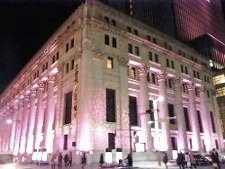 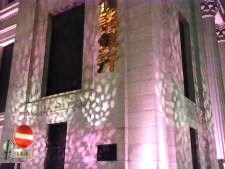
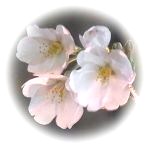 Nihonbashi is the center of Edo, which prospered as a big city that surpasses Paris and London. As a starting point for water transportation and land transportation, many people and goods gathered in the neighborhood and played a central role in the economy and culture. Nihonbashi is the center of Edo, which prospered as a big city that surpasses Paris and London. As a starting point for water transportation and land transportation, many people and goods gathered in the neighborhood and played a central role in the economy and culture.
In recent years, redevelopment plans have been promoted with the aim of creating a city that combines cutting-edge urban functions while inheriting the genealogy of history and tradition, with the government, private and local communities working together. On March 20, new commercial facilities "Cored Muromachi 2" and "Cored Muromachi 3" opened, and the city is bustling newly dressed.
In the Nihonbashi area, from March 20 to April 6, the event "Nihonbashi Spring / Sakura Weeks" is held on the theme of "Sakura", a symbol of spring.
This time, we will focus on the main event of the "Sakura Festival", "Sakura Light Up", which aims to "let you experience new ways to enjoy spring and cherry blossoms while feeling the tradition of Nihonbashi."
The venue will be Mitsui Main Building, Nihonbashi Mitsui Tower, Choledo Nihonbashi, Choledo Muromachi, Choledo Muromachi 2, Choledo Muromachi 3, and Himotohashi Mitsukoshi Main Store Main Building.
The entire area, from historic buildings to new facilities, is lit up with cherry blossoms.
(upper left/middle/right/middle left/middle)
During the exhibition period, "Japanese shop curtain", which colored the eaves of Nihonbashi shops, revived during the Edo period. (Right and lower left)
From March 22nd to 23rd, around Edo Sakura-dori St., there is also a limited time "Night Sakura Open Bar" where you can enjoy the taste of nearby commercial facilities and stores. (in the lower row)
The free bus "Nihonbashi Sakura Bus" (lower right), which allows you to travel around the surrounding area, is also operated for a limited time, and you can enjoy a night walk of a new entertainment event while the whole is wrapped in a graceful cherry blossom-colored light.
In the second half of the exhibition, Ningyocho amazake Yokomachi "Sakura Festival" (March 30) and Nihachikai Sakura Festival (April 4-6) will be held.
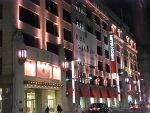 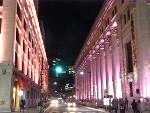 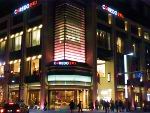
 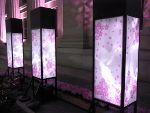 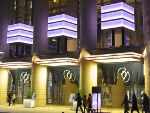
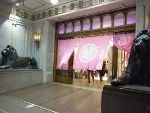 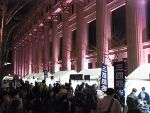 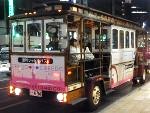
[Sam]
March 19, 2014 09:00
<Asashio Canal Ship landing & SSIII> <SSIII Deck to Kiyosubashi & Tokyo Sky Tree>
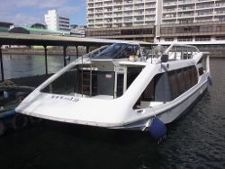 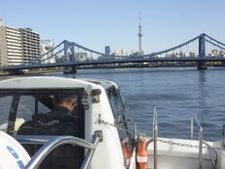
On March 15 (Saturday), we participated in the "Sumida River Tour Boat Tour" hosted by the River Section of Chuo-ku Water and Green Division.
"Let's experience the scenery of the Shinsui-Koen Park and Sumida River in the ward from the boat," a tour of the Sumida River takes about two hours to the area around the Tokyo Sky Tree starting from the morning tide canal boat landing (3-1 Harumi).
At 9:15 Tokyo Bay cruising: Boarded Ess III (capacity: 60 people) (first flight) and departed from the morning tide canal boat landing.
The course is Asashio Kobashi ~ (tentative name) Asashio Canal Bridge ~ Kachidokibashi ~ Tsukuda-ohashi Bridge ~ Chuo-ohashi Bridge ~ Eitai Bridge ~ Eitai Bridge ~ Sumida River Ohashi ~ Kiyosu Bridge ~ Shinohashi ~ Metropolitan Expressway Route 6.7 ~ Ryogoku Bridge ~ JR Aioi Bridge ~ Kuramae Bridge ~ Umaya Bridge ~
There were times when the city and the waterside were separated due to the decline of boat transportation, flood control, and the improvement of function priority during the high growth period, but in recent years the natural environment of the waterside and the function as a hydrophilic space have been re-examined, and the terrace maintenance has been carried out.
Currently, the waterside terrace is equipped with terrace flower beds, dog run terraces, terrace galleries, disaster prevention docks, etc. There are also stylish open cafes that apply the revised "River Site Permit Regulations" to the view point of view of Sumida Park, where the namako wall style seawall was located.
If you think about the historical sites scattered in the surrounding area, you will see the remnants of the downtown atmosphere that still drifts in your mind, but you will be fascinated by the lively town where old and new intersect and transform every moment.
In addition, the scenic view where the Tokyo Sky Tree fits just behind the middle of Kiyosu Bridge, an elegant suspension bridge that is described as feminine, which is unique to the ship, and when passing through Asashiobashi and Harutsuki Bridge with low bridge girders, passengers on the deck on the second floor experienced a thrilling scene that warned, "Please bow your head."
Unfortunately, it did not coincide with the flowering time of Yoshino cherry tree, but we were able to enjoy bridges of various types and colors and changes in the coastal scenery from a different perspective, so we had a fulfilling weekend time.
Thank you very much to everyone involved.
<Rainbow Bridge> <Hamarikyu Garden & Tokyo Tower> <Kachidokibashi & Tokyo Sky Tree>
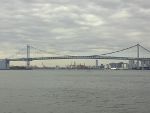 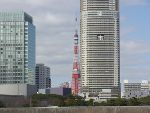 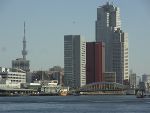
<Chuo-ohashi Bridge & Tokyo Sky Tree> <Tsukuda River City 21> <Eitai Bridge & Tokyo Sky Tree>
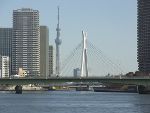 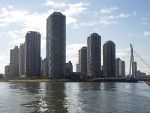 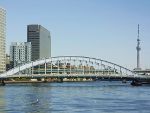
<Kiyosubashi & Tokyo Sky Tree> <Shinohashi> <Umaya Bridge & Water Bus "Doi">
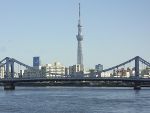 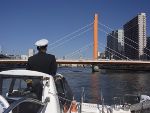 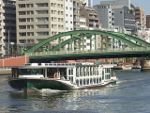
<Azuma-bashi Bridge & Water Bus "Sakura"> <Tokyo Sky Tree> <Tokyo Sky Tree reflected on the wall of the building>
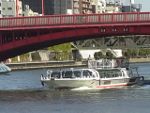 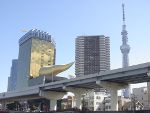 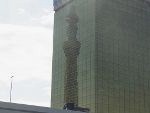
[Sam]
March 18, 2014 14:00
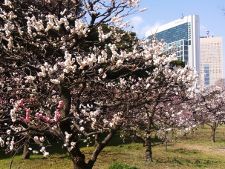 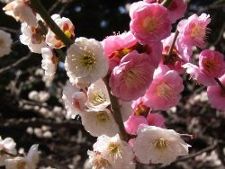
Due to the record heavy snowfall earlier, fallen trees and broken branches occurred extensively in parks in Tokyo. The Hamarikyu Onshi Garden is no exception, and for a while, fallen trees and fallen leaves blocked the garden path, there were many broken branches over the head, and some traffic became impossible to ensure safety, but gradually around Baien The removal work has been completed, and the late blooming plums are in full bloom, giving a faint sweet scent.
This time, I'm going to talk about it.
The middle ring of the double-flowered of the Noume family, which is rare among plums with many classical kanji names, is said to be a "changed species".
Red, light red, spot, and white flowers are mixed in a single tree and bloom.
It is said that depending on the year, where and how it blooms, it is not specified, and the appearance differs every year.
It may be blooming in the plums themselves "like feelings", but here too, I have to feel the mystery of nature.
I hear that many fans are looking forward to the different color patterns.
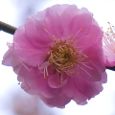 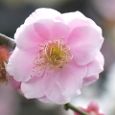 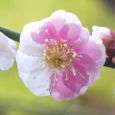 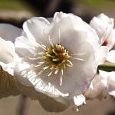
[Sam]
March 11, 2014 14:00
<Edo Sakura Fubuki> <Edo Kiriko chandelier>
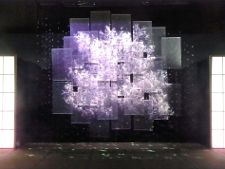 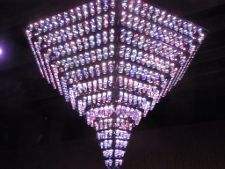
On March 7th, "Edo Sakura Renaissance - Night Sakura Utage-" started at Nihonbashi Mitsui Hall on the 5th floor of Coredo Muromachi.
The production was directed by Hidechi Kimura, producer of the underwater art exhibition "Art Aquarium", which started in 2011 as an event to color the cool summer of Nihonbashi.
It seems to be set as "the earliest and beautiful art cherry blossom viewing in Edo" unfolds in the mansion of a man named "Kabuki" in Edo.
"Wazakura Namikimichi" is a collection of cherry-patterned kimonos, including three rare works from the Edo period, and lit up.
Produced 1,000 glass cherry blossom petals using the technique of "Edo Kiriko", made full use of the latest production techniques such as projection mapping, and the cherry blossom trees in full bloom blow in the wind and the petals flutter like a snowstorm. "Edo Sakura Fbuki" expresses the appearance.
"Edo Kiriko chandelier" with a height of about 2.5m and a diameter of about 4m, consisting of about 1,000 pieces of Edo Kiriko glass, and the cherry blossom petals scattered on the surface of the water, the latest art aquarium "Edo Sakurarium" combines the work "Sakurarium" where goldfish swim.
"Sakura Washi no Gate" is a corridor of handmade Japanese paper with a cherry pattern.
"Ise-style cherry blossoms" is a shadow painting art with a cherry blossom pattern using the traditional industry "Ise Katagami" designated by Suzuka City, Mie Prefecture.
It combines traditional culture with contemporary art, does not use a single cherry blossom, and various new designs express the beauty of the cherry blossoms, creating a "hanami".
In addition, there are also "Night Cherry Blossom Room", "Night Cherry Blossom Bar", and "Itsuka Cherry Blossom Room".
The event will be held from 11:00 to 23:00.
The exhibition will be held from March 7 to 30.
In addition, at "Ajisai-dori St." near the venue, early blooming "Okamezakura" is blooming.
<Sakurarium 1> <Sakurarium 2> <Sakurarium 3>
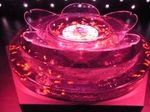  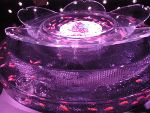
<Wazakura Namiki Road 1> <Wazakura Namiki Road 2> <Sakura Washi Gate>
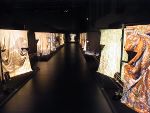 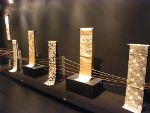 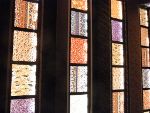
[Sam]
March 5, 2014 09:00
 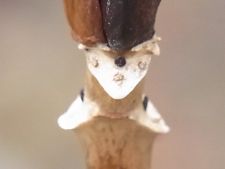
At this time, the hydrangea has completely fallen leaves and exposed naked, but dark purple winter buds appear from all over the brown branches, and the tip of the stem is large and looks like a candle flame. You can see the top buds.
At the place where the leaf handle was attached to the branch, there is a unique trace called leaf scar.
The leaf scars are those in which traces of the vascular bundle consisting of the wood part of the water passage absorbed from the roots and the teacher part of the passage of nutrients remain like spots.
In the case of hydrangea, there are three traces of vascular bundles, and the leaf scars are fallen pine-shaped to heart-shaped.
If you look like a human face, the left is like a "grandfather face" and the right is a "grandchild (baby) face".
The number and arrangement of vascular bundles vary depending on the tree, and are parable to human and animal faces, such as "cute face", "laughter face", "crying face", "singular face", "child face", "elderly face", etc. It seems that there are many things.
Here are some examples of such unique leaf scars that I saw at Harumi Triton Square <Flower / Green Terrace>.
It is one of the pleasures of walking around green spaces and parks from winter to early spring.
<Kashiwaba Hydrangea> <Tochinoki> <Mali Ode> <linden arrowwood>
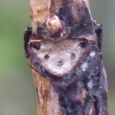 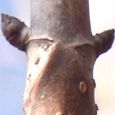 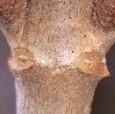 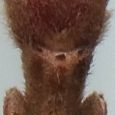
1
|
Links
|

 On March 25, the blossoming declaration of Yoshino cherry tree in central Tokyo was issued. 9 days later than last year and 1 day earlier than normal.
On March 25, the blossoming declaration of Yoshino cherry tree in central Tokyo was issued. 9 days later than last year and 1 day earlier than normal.













































